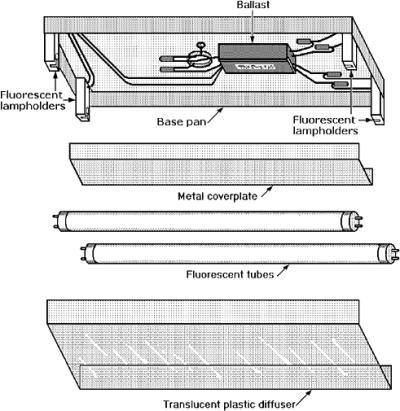Handbook of Electrical Design Details, Second Edition

Standard fluorescent lamps require dedicated luminaires with compatible ballasts to operate them because they cannot be inserted into 120-V AC sockets. Figure 8-8 is an exploded view of a typical two-tube fluorescent luminaire. The base pan of the luminaire is formed from light sheet metal, usually painted white to blend in with the ceiling on which it is mounted. The four tube sockets are fastened to the corners of the base pan. A sheet-metal coverplate protects the wiring and ballast.

After the base pan is bolted or screwed to the ceiling or an appropriate overhead support, the wiring connections are made. The metal cover protecting the ballast and wiring is then clamped in position. After installing the tubes and testing the fixture, the translucent plastic diffuser is positioned over the lamps and snapped into the base pan.
